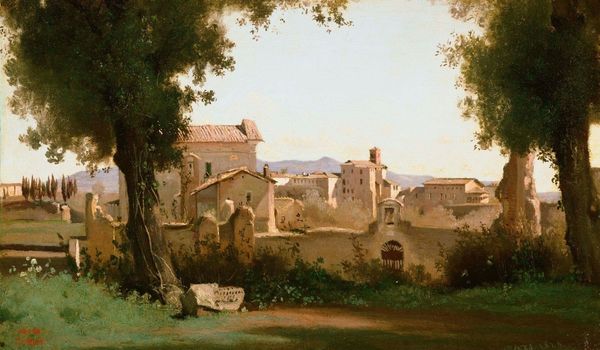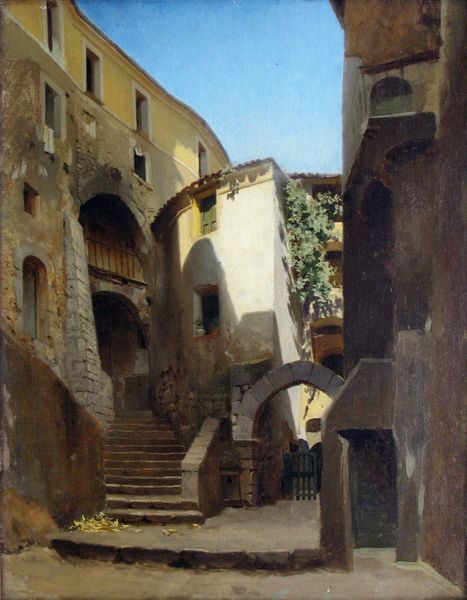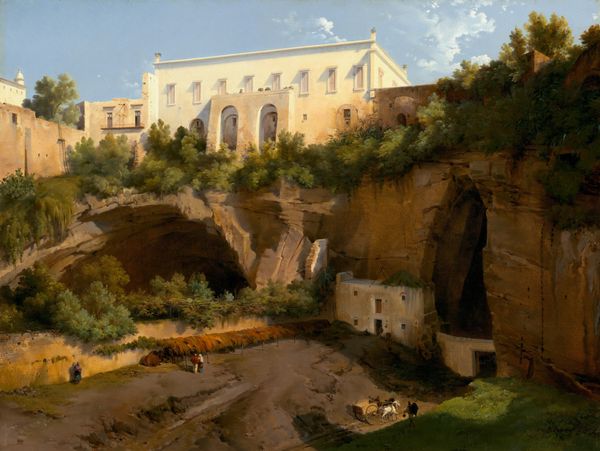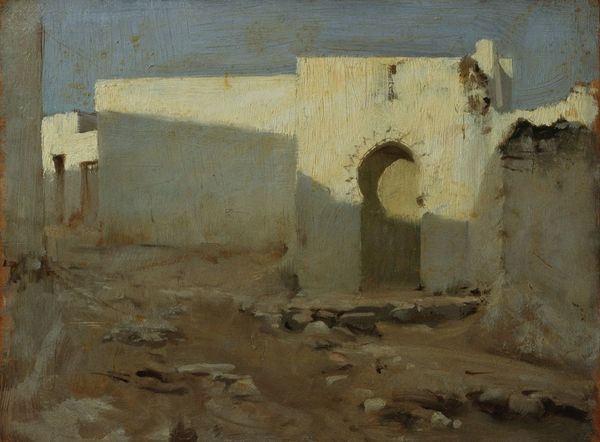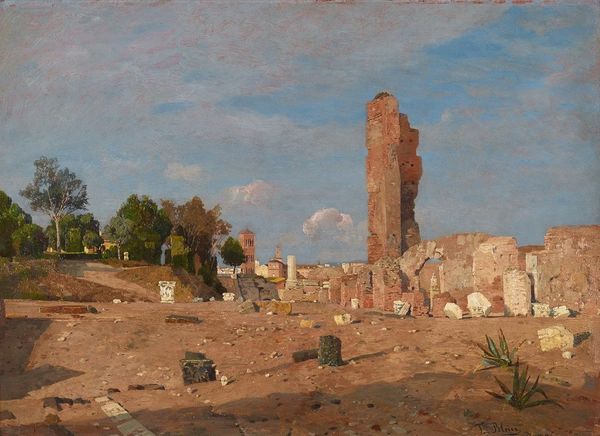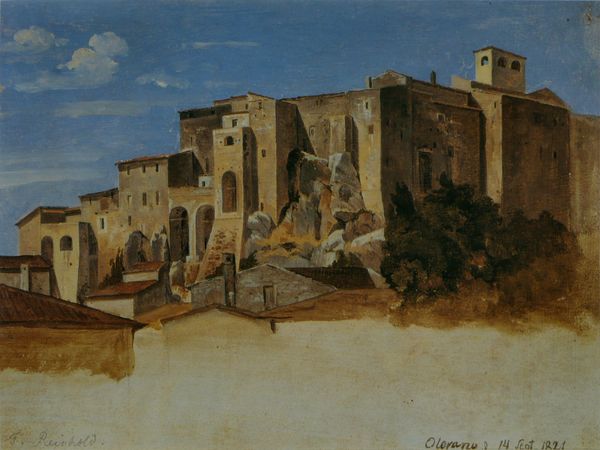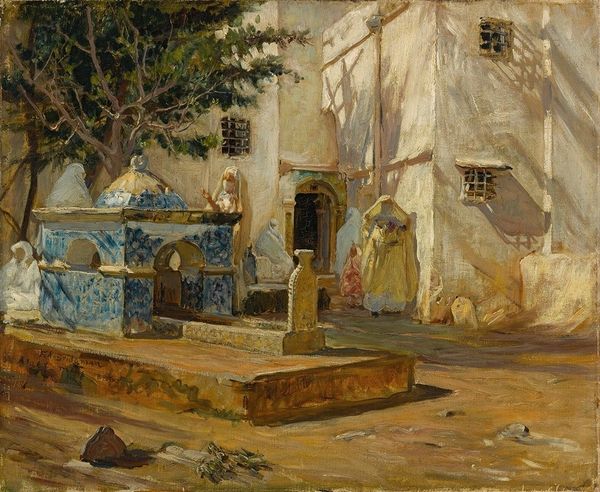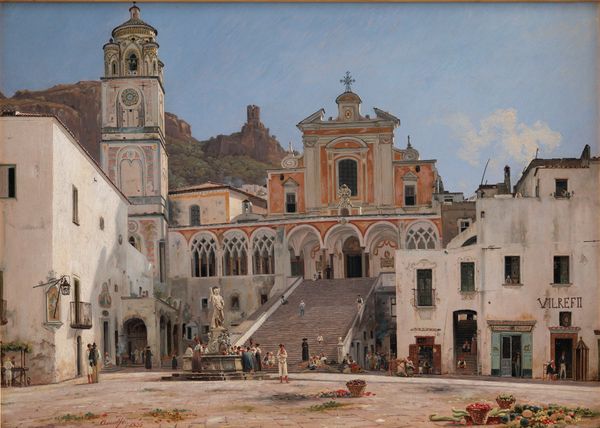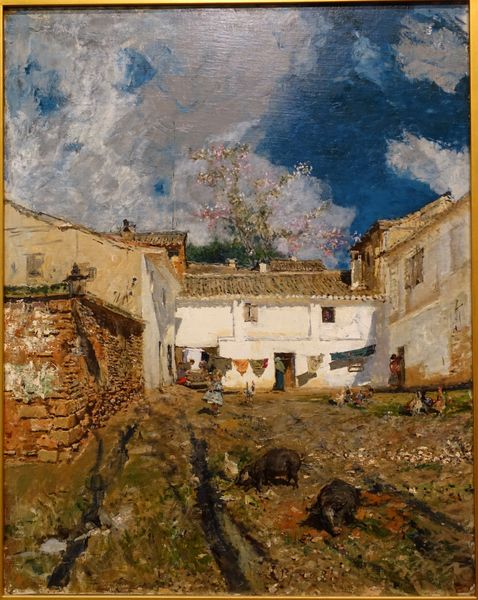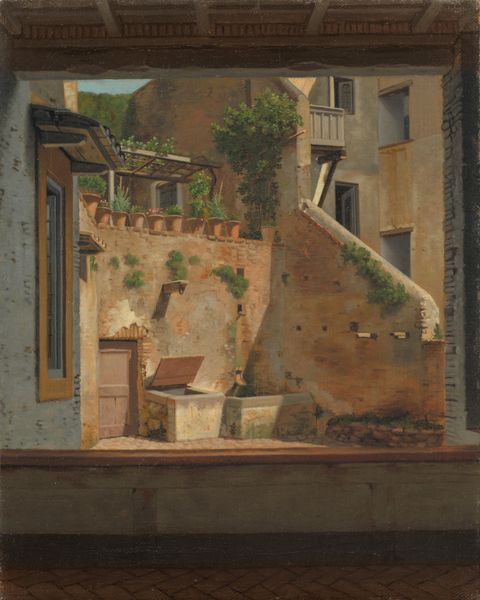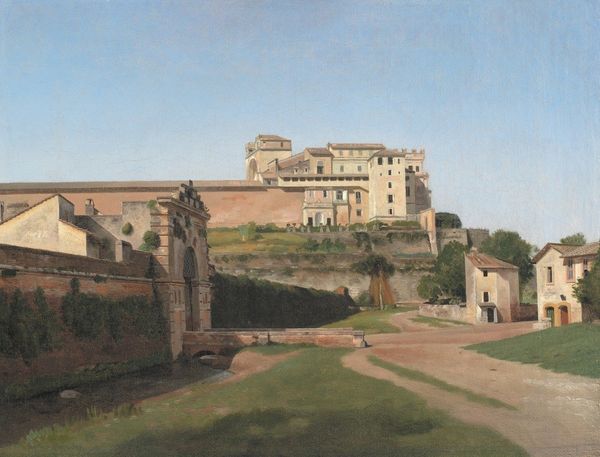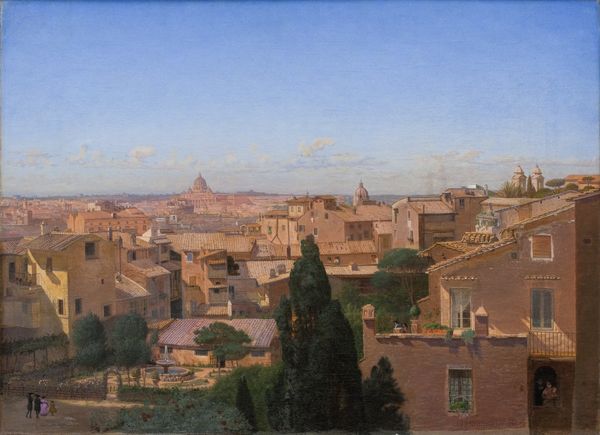
painting, oil-paint
#
painting
#
oil-paint
#
landscape
#
orientalism
#
cityscape
#
genre-painting
#
academic-art
#
realism
Copyright: Public domain
Curator: Alexandre-Gabriel Decamps, an artist closely associated with the Orientalist movement, is credited with this canvas entitled "In the Shade of the Courtyard". The handling of oil paint creates a shimmering effect. Editor: It immediately makes me think about colonialism, a western fantasy of an idyllic "other," doesn't it? The sun-drenched buildings are beautiful, but it’s presented for a Western audience consuming an exotic, romanticized vision. Curator: Well, you're right that Decamps never actually visited the locations he depicted. His work, and the popularity of Orientalism more broadly, does highlight a very specific relationship of power between Europe and North Africa at this time. Many of his works focused on similar scenes: light reflecting off architecture and figures within vaguely Middle Eastern or North African settings. He did tap into a demand. Editor: Right, but who created that demand, and what purpose did it serve? Was it simply escapism, or did it contribute to the broader political and cultural project of colonial domination by reinforcing existing stereotypes? I look at this image and I want to know: what are the people in the courtyard thinking? How are they actually living under the systems of oppression reflected by its popular acclaim in the West? Curator: Those are valid concerns. The genre became quite popular throughout the 19th century. Some see beauty in the rendering of light, or admire his skills in capturing realistic detail, as seen in the texture of the building's walls and the garments of the people. You mentioned an idyllic image, and I would agree, his artistic choices created a captivating atmosphere for western audiences in particular. Editor: Absolutely. Decamps certainly had talent, and a canny understanding of what would sell. But his artistic choices, however masterful, served to perpetuate a distorted, self-serving image. Art, like history, is never truly objective; it's always someone’s perspective. We have to recognize these layers and biases when confronting them today, particularly these depictions of the other. Curator: Food for thought. Perhaps contemplating Decamps' painting challenges us to question whose stories are being told and for what ends. Editor: Exactly! Let's think about that in relation to the social structures in place today, as well as how they were in Decamps' own time. I think approaching it like that helps to contextualize artworks such as these within a contemporary framework.
Comments
No comments
Be the first to comment and join the conversation on the ultimate creative platform.
